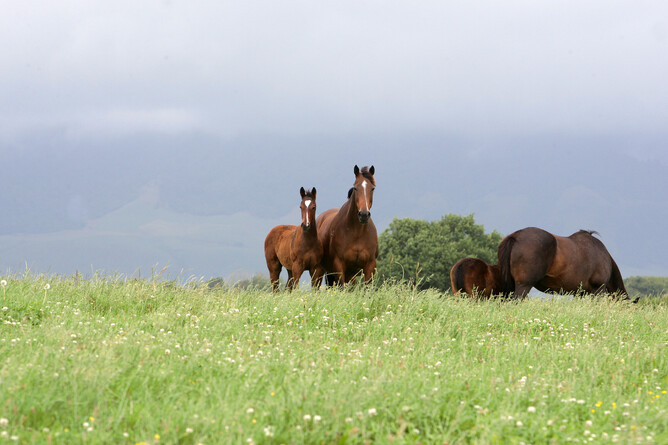The NZTBA have been active working with He Waka Eke Noa (Primary Sector Climate Action Partnership) to discuss how the thoroughbred industry will be affected by the five-year programme to reduce emissions and build resilience to climate change.
Difficulty arises as there is currently no emission reporting system in place specific to equines, and as a non-food producing animal little research has been undertaken to date.
New Zealand currently uses a tier 1 methodology to estimate greenhouse gas emissions from horses, along with international default parameters and emission factors.
Comparing data from other countries to New Zealand lacks accuracy as horses here are raised largely at pasture with lower stocking rates compared to the northern hemisphere where more are housed more in barns due to weather and land restrictions.
Stocking rates also vary during the year due to seasonal activity, for example some farms carry more mares during the breeding season.
He Waka Eke Noa, which translates to "we are all in this together", is working with farmers and growers to develop practical solutions to be implemented during the five-year and have asked the NZTBA to provide high level information on the equine sector’s emissions and stocking rates.
The framework of the plan requiring farmers to reduce greenhouse emissions is set for 2025, though farms over 80HA must have plans by 2022. At a rough estimate there are around 17 thoroughbred farms in New Zealand over 80HA, though most are mixed stock and this does not take into account other equine sectors.
The NZTBA has already worked through the struggle of government organisations comparing equines with ruminants and their nitrogen levels when working through the PC1 Healthy Rivers Plan change.
As a mono-gastric hindgut fermenter, horses utilise nitrogen differently from ruminants. Significant digestion and absorption of protein in the form of amino acids occurs in the small intestine, where there is no evidence of ability to utilise microbial protein in the hindgut, so the recycling and utilisation of non-protein nitrogen within the animal are considered minimal. Stud farms also generally do not used nitrogen fertilisers as we are growing athletes not production animals.
The NZTBA is working on a potential research project to assess the equine sector’s emissions via the Greenhouse Gas Inventory Research fund, independent of He Waka Eke Noa.
The research project could investigate, but may not be limited to: analysis of liveweight calculation assumptions and methodologies, analysis of nitrogen excretion, analysis of other parameters used to calculate emissions from horses (Enteric fermentation, manure management), proportion of manure going into different manure management systems, population subcategories used in different inventories (e.g. age group breakdown).
The NZTBA are also working with the New Zealand Equine Health Association to collate information on the equine industry at large.
"We learnt so much from our Healthy Rivers PC1 submission," NZTBA CEO Justine Sclater said. "We have realised the importance of being involved in these environmental processes from the onset so we are not included in the production animal sector and any outcomes are a fair representation for and of our industry.
"The NZTBA will continue to work through the process and will keep everyone updated on the progress of the plan and when any changes become relevant for them to implement."
Takeaway points:
- He Waka Eke Noa are developing a five-year plan for farmers to reduce emissions and build resilience to climate change.
- There is currently no accurate way to measure the level of emission from New Zealand-based horses.
- The NZTBA are working with He Waka Eke Noa, government bodies, NZ Thoroughbred Racing and NZ Equine Health to develop an accurate measurement system so the equine sector are represented fairly and accurately in the five-year-plan.
Click HERE to read the article featured on stuff.co.nz


